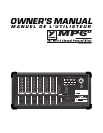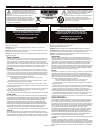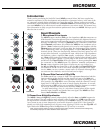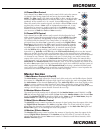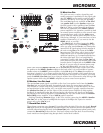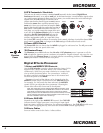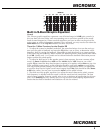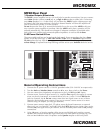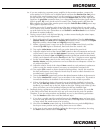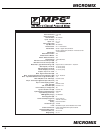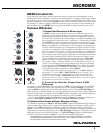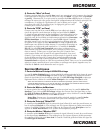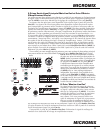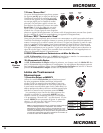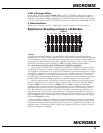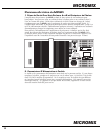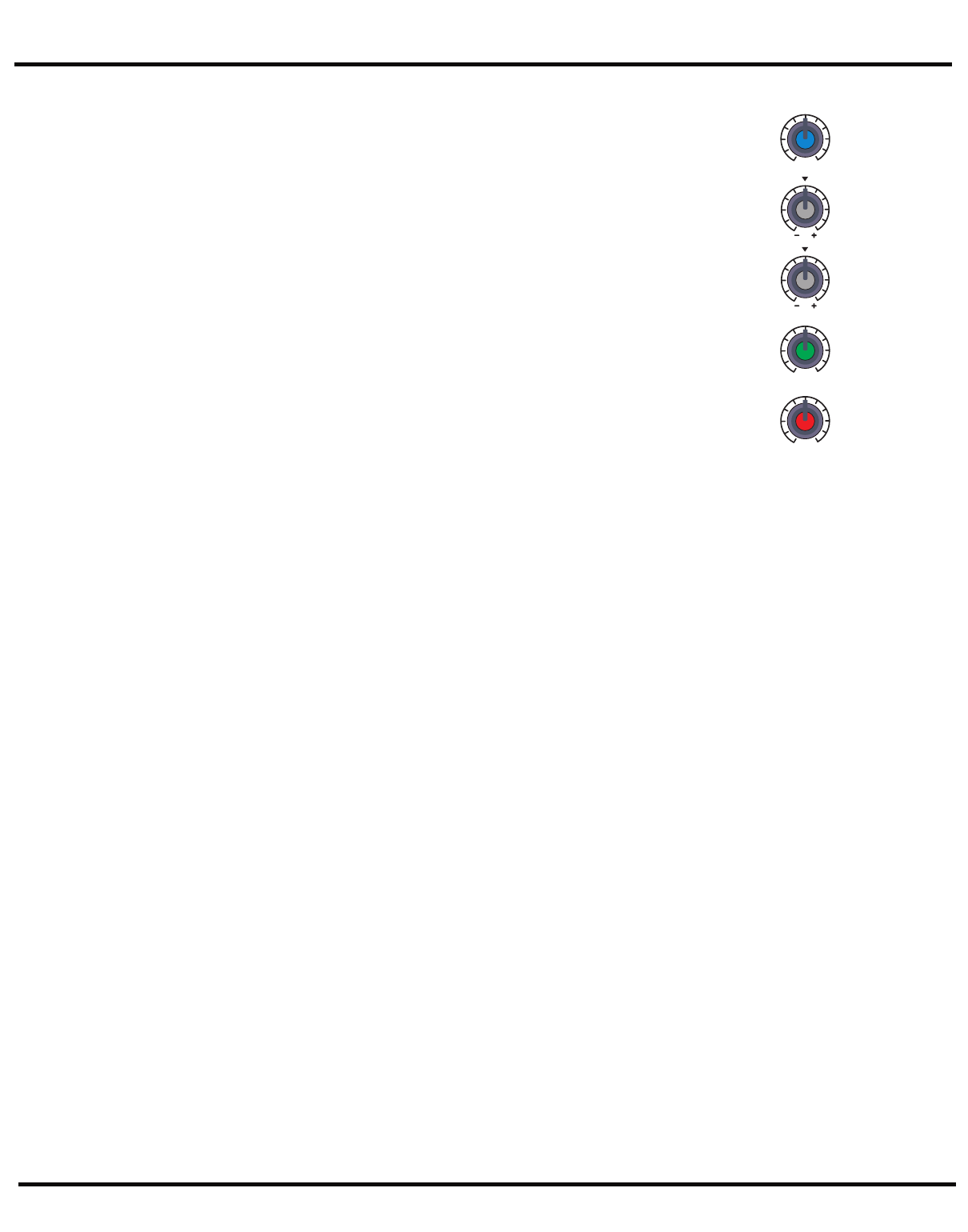
MICROMIX
MICROMIX
2
4. Channel Mon Control
Each channel has a Mon (monitor send) control which varies the amount
of channel signal being tapped off and sent to the monitor bus in the
MP6D. The Mon signal is pre-fader and pre-EQ, in other words it is taken
before the Gain and EQ controls so that the main mix can be EQ'd inde-
pendently of the monitor mix. As a result, channel EQ settings do not
affect the sound of the monitor signals, nor do the channel Gain controls
regulate their volume. (Note: with an independent monitor mix, it may
be beneficial to connect a graphic equalizer to the Monitor output for
feedback control. Also, remember that to turn a channel off completely,
you must turn off both the Gain and Mon controls).
5. Channel EFX Control
Each channel has an EFX (effects send) control which adjusts the level
of the channel signal being tapped off and sent to the MP6D effects bus.
This signal is post-fader and post-EQ; in other words both the channel
EQ controls and the channel Gain control affect it. Normally, the out-
put signal from the effects bus is internally routed to the Digital Effects
Processor. In this situation, the EFX control would regulate the intensity
of the built-in effects as it is heard on that channel's sound through the
main PA system and the Record Out jacks. In standard operating mode
with the built-in effects working, you would connect a regular on/off
footswitch (e.g. Yorkville model IFS-1A) to the EFX Footswitch/Send jack to turn the internal
effects on and off. See the section on this feature later in the manual for more information.
Alternatively, this signal can be connected to the input of an external effects unit and returned
via channel to any channel. If the effects unit uses 1/4-inch plugs, you would connect the
output of the unit to any one of the Balanced Line In jacks. In this mode, the internal effect
is not bypassed, so if you are not planning to use an internal effect, you must turn down the
Main Effects and Monitor Effects Master controls. Also, if you do not require any effects at all,
the effects bus output signal can be connected to the input of an additional monitor system or
other amp/speaker system via the EFX Footswitch/Send jack using a standard shielded patch
cord. In this case, the EFX controls would act as send controls to achieve a semi-separate mix
(remember the channel Gain controls will also affect this signal).
Master Section
1. Main Master Control & Clip LED
The Main Master control adjusts the overall level of the main mix and the PA volume. Beside
this control is a Clip LED that indicates high signal levels within the main mixing bus. Reduce
the Main Master or the channel Gain settings if the Main Clip LED is more than slightly active.
(Note: to ensure maximum signal headroom and clarity, operate the mixer with the Main
Master set at around 7 or so. This way, you will be running the channel Gain controls at lower
settings, which helps to ensure that the channels do not clip).
2. Monitor Master Control
The overall level of the monitor mix is adjusted with the Monitor Master control. Beside it is a Clip
LED that indicates high signal levels within this bus. Reduce the Monitor Master or the channel Mon
levels if the Monitor Clip LED is more than slightly active. (Note: as with the Main Master, keep the
Monitor Master at a relatively high setting to prevent clipping the bus).
3. Main Effects Master Control
The Main EFX master control regulates the amount of signal going from the output of the inter-
nal Digital Effects Processor to the Main mixing bus where it is mixed with the dry signals
direct from the channels. It controls overall effects intensity on the Main Line Out signal and
Record Out signal, as well through the main PA speakers.
4. Monitor Effects Master
The Monitor EFX master control regulates the amount of signal going from the output of the
internal Digital Effects Processor to the Monitor mixing bus where it is mixed with the dry
signals direct from the channel Mon send controls. It controls overall effects intensity of the
Monitor Line Out signal.
EFX
HIGH
5
6
10
4
0
73
19
82
5
6
10
4
0
73
19
82
5
6
10
4
0
73
19
82
3
15
3
15
66
12 12
99
3
15
3
15
66
12 12
99
LOW
GAIN
MON



